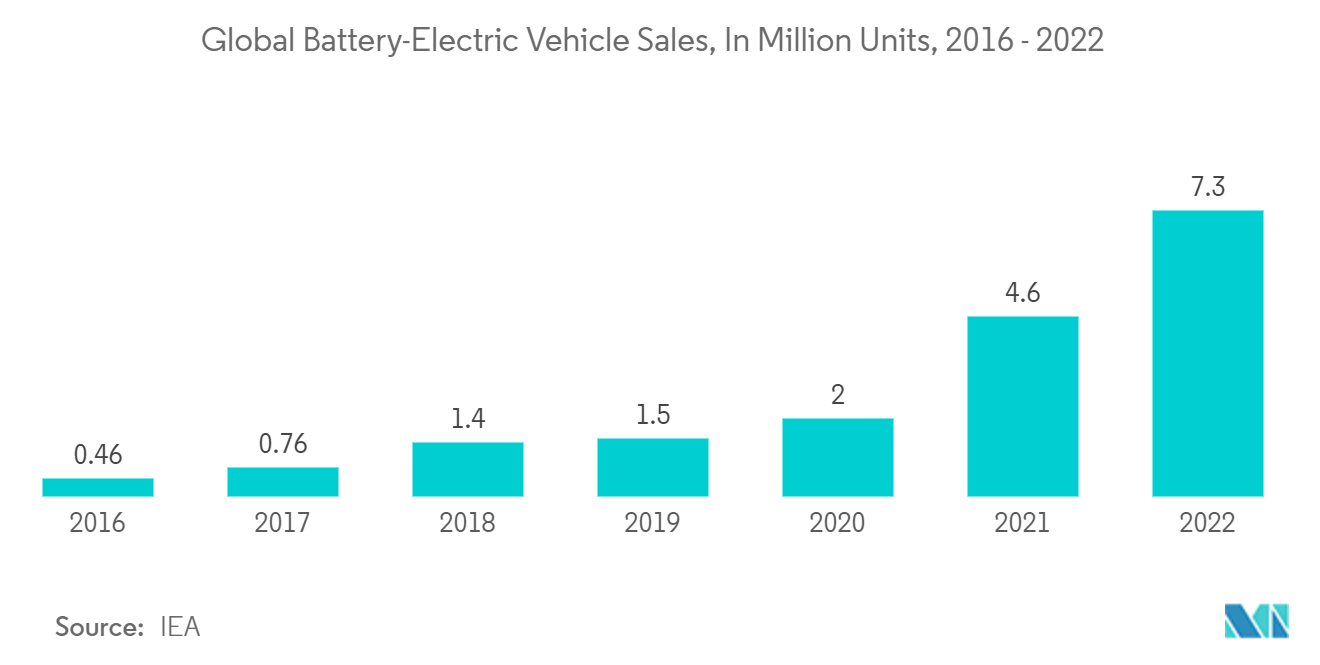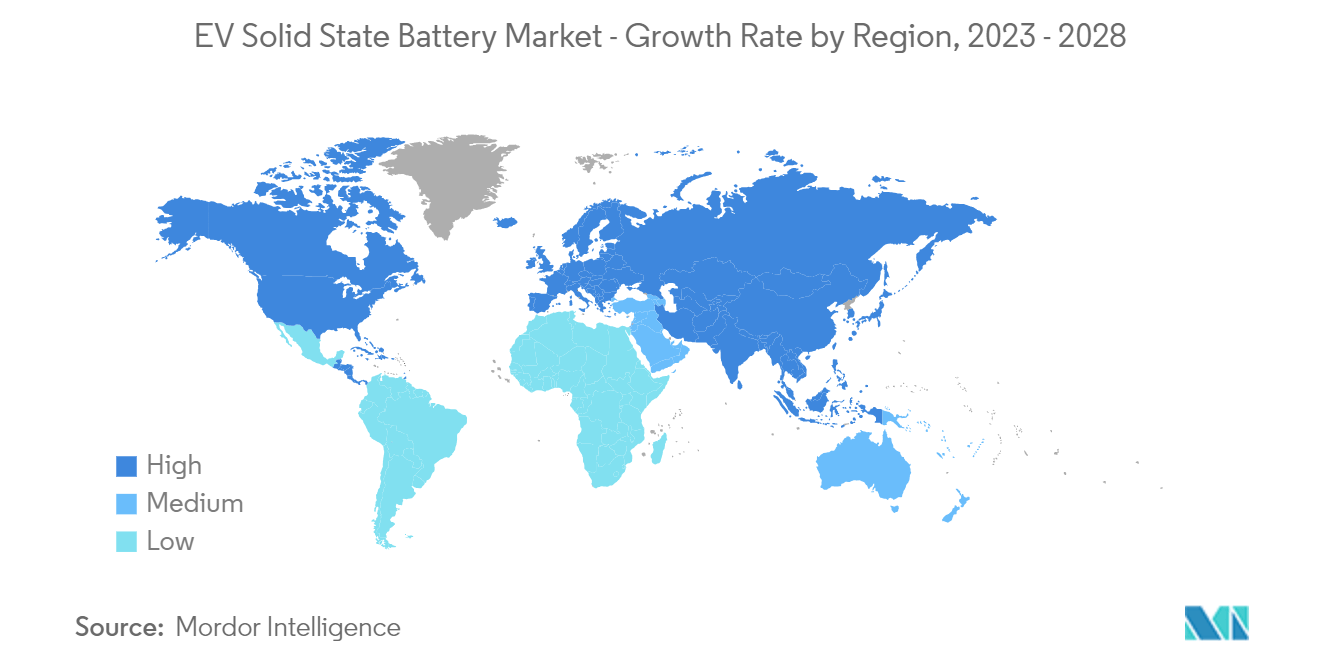Market Trends of EV Solid-state Battery Industry
Increasing Sales of Electric Vehicle
- The movement to accelerate the adoption of light-duty passenger electric cars (EVs) and phase out traditional vehicles with internal combustion engines is gaining traction around the world. The increase in average fuel prices reflects the fact that Europe has a higher share of new electric car registrations than other parts of the world. Hence, mass adoption of electric vehicles, owing to rising fuel prices, is expected to proliferate globally in the electric powertrain market.
- Europe is a crucial market for electric powertrains and holds a substantial share of automotive production. Countries such as Finland, Norway, Sweden, and the Netherlands have the highest adoption rate of EVs in the world. With nearly 6.2 sales that year, China was the world's largest market for plug-in electric car sales in 2022. Central and Western Europe came in second, with approximately 2.7 electric vehicles sold that year.
- The annual sales volume of battery-electric passenger cars will cross the 7 million mark in 2022. It is expected to account for about 15% of the overall vehicle sales by the end of 2026. Hence, the increase in electric car registrations resulted in an increased production of electric vehicle powertrains.
- Lower operating expenses, along with lower up-front expenditures, make electric vehicles more appealing to a wider range of customers, particularly low-income customers. Currently, transportation expenditures account for a significant portion of overall household expenses, and low-income households will gain the most from this more reasonable, accessible option.
- The increasing demand for electric vehicles and the benefits of solid-state batteries are expected to drive the demand over the forecast period.

Asia-Pacific May Illustrate Enormous Growth
The Asia-Pacific market is led by countries like China, India, and Japan. Asia-Pacific is still an immature market with immense hidden potential.
The government of China is encouraging people to adopt electric vehicles. The country has already made plans to phase out diesel fuel, which runs the current generation of commercial vehicles, such as trucks. The country is planning to completely ban diesel and petrol vehicles by 2050. Therefore, the country, being one of the largest growing electric markets, along with new developments and orders for commercial vehicles, is likely to drive the Chinese electric vehicle market.
The electric vehicle market in India is in the growing stage. Automobile giants in India, including TATA, Mahindra, Maruti Suzuki, and Hyundai Motors, are taking initiatives to provide affordable options for electric vehicles in India. Moreover, the government is providing subsidies and schemes to adopt electric mobility in India.
The government has been formulating various strategies to reduce pollution in the country. For instance, with its FAME and FAME II policies, the country has been providing incentives to customers and attractive options for investors and manufacturers to set up EV plants to propel the nation toward the faster adoption of green vehicles.
Moreover, electric cars at reasonable prices are attracting consumers, such as Tata Nexon. The recently launched mid-size SUV is one of the hot-selling cars in India, and more than 4,000 units have been sold within the year. Similarly, the 3,000 units sold by MG electric cars at a reasonable price is one of the factors increasing the sales of electric cars in India.
The Japanese government also proposed a 'carbon neutral' goal of achieving zero carbon emissions by 2050. To achieve its environmental protection goals, Huis Ten Bosch introduced pure electric buses, despite disruptions of the COVID-19 pandemic. Moreover, the demand for alternatively powered vehicles, such as plug-in hybrids, fuel cell electric vehicles, and battery electric vehicles, has increased significantly over the past few years. Vehicle manufacturers across the country are testing the possibilities of electric trucks, which may support the government's move from IC engine vehicles, thereby protecting the environment.
Such instances may aid the growth trajectory of the electric vehicle market, which, in turn, may propel the demand for solid-state batteries over the coming decade.


